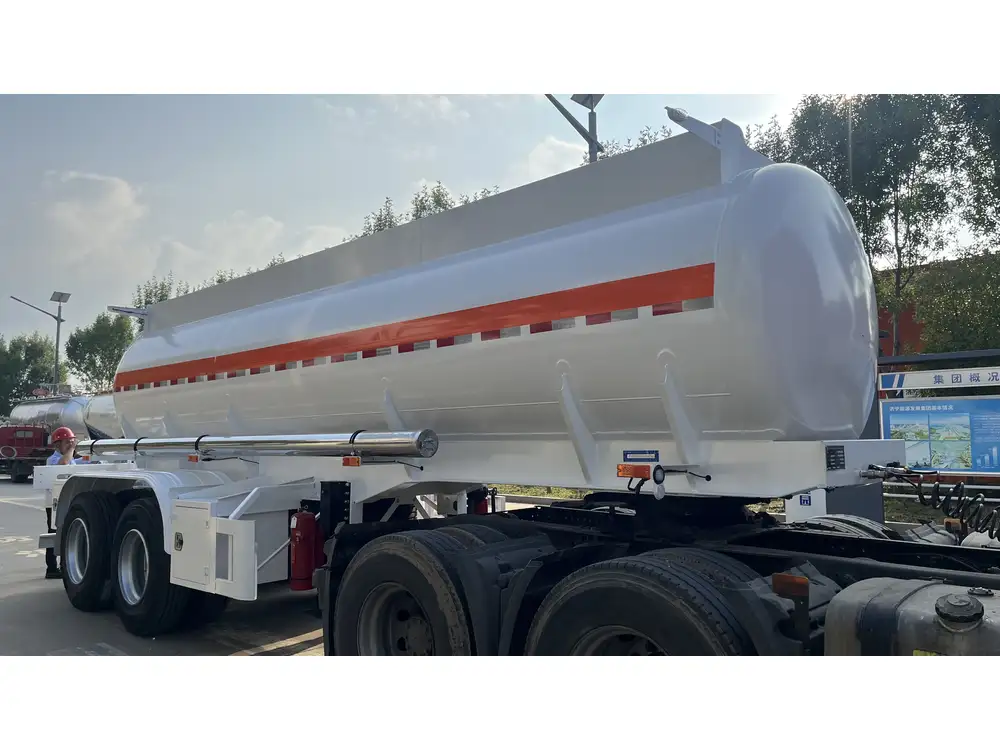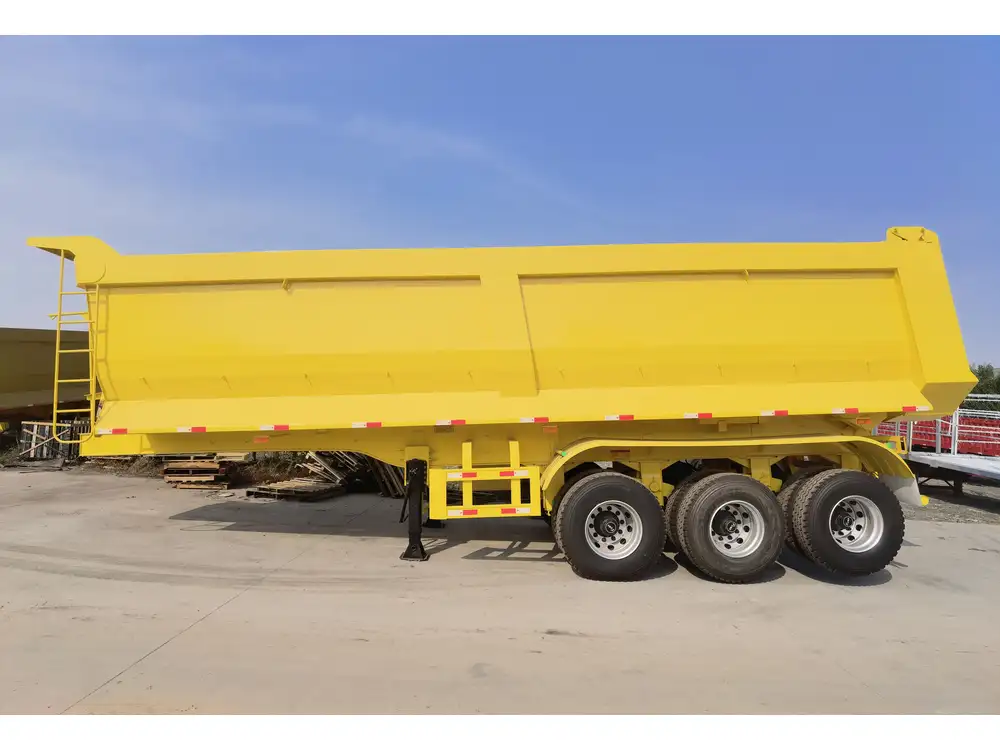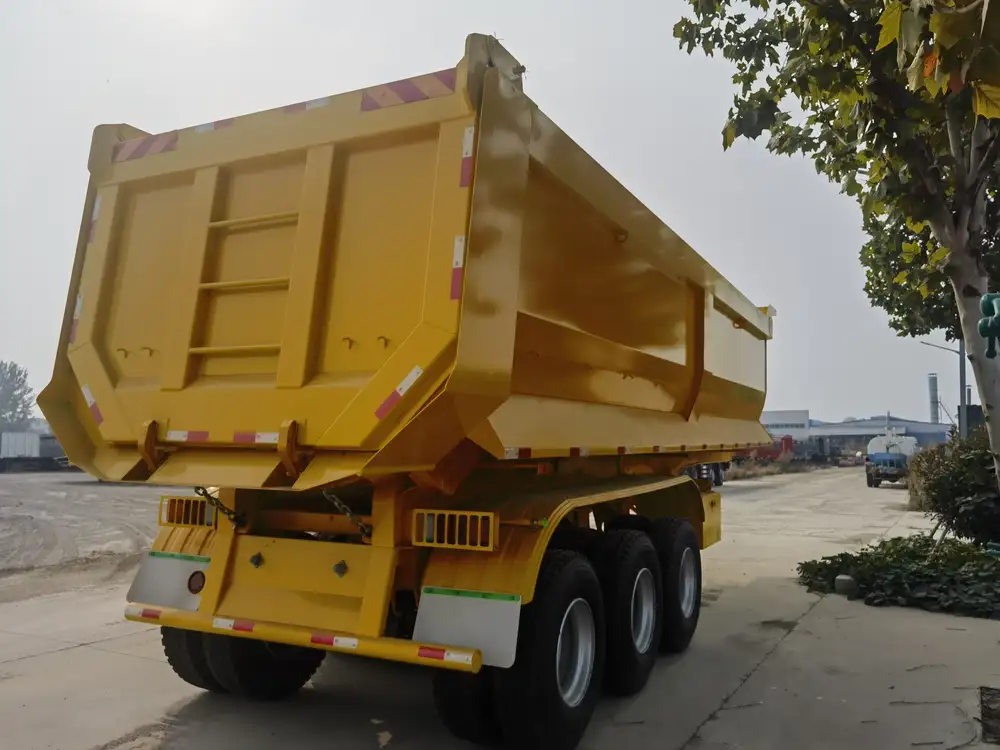The Importance of Semi-Trailer Size in the Road Transportation Industry
In the complex world of logistics and transportation, the dimensions of semi-trailers play a pivotal role in ensuring efficiency, legality, and safety. Consequently, it’s crucial for fleet managers, logistics coordinators, and businesses relying on freight transportation to have a comprehensive understanding of the varying sizes and regulations surrounding semi-trailers. This article delves into the specifics of semi-trailer lengths, providing valuable insights to help you navigate the intricacies of choosing the right equipment for your transportation needs.
What is a Semi-Trailer?
A semi-trailer is an articulated vehicle designed for the transport of goods, characterized by its unique construction—one end is attached to a tractor unit (commonly referred to as a truck), while the other end rests on the ground. This construction allows for enhanced load capacity and maneuverability, making semi-trailers an essential asset in the trucking industry.

Standard Semi-Trailer Dimensions
Understanding the standard dimensions of semi-trailers can aid in compliance with transportation regulations and optimizing load capacity. Below is a detailed breakdown of the common lengths and types of semi-trailers:
| Type of Semi-Trailer | Standard Length (in feet) | Standard Length (in meters) |
|---|---|---|
| Flatbed Trailer | 48 – 53 | 14.6 – 16.2 |
| Dry Van Trailer | 48 – 53 | 14.6 – 16.2 |
| Reefer Trailer | 48 – 53 | 14.6 – 16.2 |
| Tanker Trailer | 40 – 53 | 12.2 – 16.2 |
| Lowboy Trailer | 38 – 50 | 11.6 – 15.2 |
| Extendable Trailer | 48 – 70 | 14.6 – 21.3 |
Regulations Governing Semi-Trailer Lengths
Regulation around the dimension of semi-trailers can vary significantly from one jurisdiction to another. Here, we analyze the regulations that impact the allowable lengths of semi-trailers across various regions:
United States: The Federal Highway Administration (FHWA) establishes guidelines that allow a maximum length of 53 feet for semi-trailers operating in interstate commerce. However, certain states may have additional rules that impact size limitations, particularly regarding the overall length of tractor-trailer combinations.
Canada: In Canada, the National Safety Code (NSC) stipulates that semi-trailers can vary in length, subject to provincial regulations that may permit lengths of up to 53 feet. Additionally, some provinces may have exemptions for specialized vehicles, such as those transporting agricultural products.
European Union: In the EU, regulations generally permit a maximum semi-trailer length of 13.6 meters (approximately 44.6 feet) for standard trailers within their road network. This difference highlights the necessity for European carriers to be mindful of load configurations when transiting between countries.
Factors Influencing the Selection of Semi-Trailer Length
When selecting the appropriate length for a semi-trailer, several factors must be considered, including:
Type of Cargo: The nature of goods being transported heavily influences the choice of semi-trailer type and length. For instance, longer trailers may be more suitable for bulk items, while shorter models are often employed for heavier or specialized loads.
Weight Limits: Each jurisdiction imposes weight limits, which can indirectly dictate trailer length. For example, transporting heavier loads might necessitate a shorter trailer to remain within weight regulations.
Operational Efficiency: Efficiency in loading and unloading can often be optimized through the choice of trailer length. Longer trailers may offer greater cargo capacity but can complicate maneuverability in tight spaces.
Route Planning: Routes planned for transportation can dictate trailer length due to local regulations regarding road widths, bridge clearances, and turn radii. Understanding the infrastructure of your typical route is essential.

Unique Uses of Varying Semi-Trailer Lengths
Semi-trailers come in various lengths, each serving unique purposes. Below are examples of how different lengths can be utilized effectively:
Shorter Semi-Trailers (40–45 Feet): Ideal for regional deliveries, these trailers are often more agile, allowing for efficient operations in urban settings with narrow streets.
Standard Trailers (48–53 Feet): These lengths are the most common for general freight, providing a balance between capacity and maneuverability. They are versatile in transporting a variety of goods, from consumer products to automotive parts.
Extendable Trailers (up to 70 Feet): Employed for oversized loads, these trailers allow for the transport of non-standard equipment and materials such as construction machinery or steel beams. Their ability to adjust in length provides flexibility for various cargo sizes.
Analyzing the Impact of Technology on Semi-Trailers
The evolution of technology has also brought notable changes in semi-trailer design and dimension standards. Some innovations worth mentioning include:
Aerodynamic Trailers: Advanced designs to minimize drag, leading to better fuel efficiency. These may lead to slightly longer trailer configurations, which require careful regulation adherence.
Smart Trailers: Equipped with sensors and IoT capabilities, providing real-time data on cargo condition, trailer location, and overall operational health. While these features enrich the logistics process, they may include additional bulk or weight considerations.
Future Trends Influencing Semi-Trailer Length Regulations
Looking ahead, a few emerging trends are expected to play a significant role in how semi-trailer lengths are regulated and utilized:
Sustainability Movements: Increasing environmental awareness is prompting a shift towards more efficient vehicle designs. Longer, more aerodynamic trailers may gain favor if they show an ability to reduce emissions per unit of freight transported.
E-commerce Growth: As online shopping continues to grow, demand for logistics solutions that can accommodate increased volumes of smaller packages might lead to the popularity of variable trailer lengths designed for flexibility.
Technological Advancements: As technology progresses, the way we measure and regulate trailer size may also evolve. Future innovations could introduce more dynamic models for trailer dimensions based on real-time data and adaptive infrastructure.

Conclusion: Key Takeaways for Understanding Semi-Trailer Lengths
In conclusion, understanding how long a semi-trailer is transcends basic measurements; it encapsulates a wide range of considerations including regulations, operational efficiency, and the specific needs of cargo being transported. The choices made regarding trailer length can have profound impacts on compliance, safety, cost-effectiveness, and overall delivery efficiency.
When navigating the complexities of semi-trailer lengths, it’s essential to:
- Stay informed about the regulatory environments across different regions.
- Consider the types of cargo and their unique handling requirements.
- Align the semi-trailer choice with future trends in logistics and technology adaptation.
By carefully analyzing these factors, you can optimize your trailer selection strategy, ensuring that your operations remain robust, compliant, and innovative in the rapidly evolving transportation landscape. Embracing these insights will undoubtedly enhance your ability to make well-informed decisions that drive efficiency and enhance your logistics capability.



